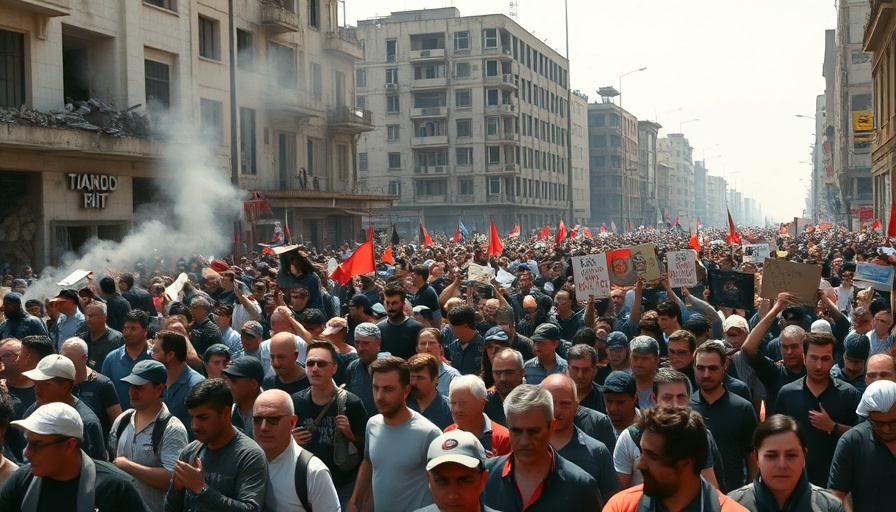
Rising Voices: Gazans Demand Change
In a rare display of public dissent, thousands of Gazans have taken to the streets to protest against Hamas, the ruling militant group that has long held sway over the territory. This grassroots movement may signal a pivotal moment, not just for the residents of Gaza, but also for the broader geopolitical landscape. The chants of “Down with Hamas” and “Stop the war” echo the frustrations of a population weighed down by suffering and chaos.
Understanding the Pulse of Public Sentiment
At the heart of these protests lies a growing realization among the populace: Hamas does not offer solutions. As many residents reflect on the devastating consequences of ongoing hostilities, voices of dissent have begun to emerge. For months, the group has stifled dissent and rallied support based on propaganda, often invoking martyrdom as a virtue.
Instead, protesters are expressing their desire for peace, freedom, and a dignified existence. One protester poignantly remarked, “We’re dying and bleeding.” Such statements cut through the rhetoric and reveal the human cost behind the headlines.
The Role of External Influences
While local protests represent a surge of defiance, they are further complicated by external factors. With Israel's military continuing to exert pressure on Hamas, the situation remains precarious. It is worth contemplating how external military dynamics might inadvertently fuel local uprisings or squash them entirely. If the protests continue to gain momentum and sight of potential support from the Israeli Defense Forces (IDF) materializes, the stakes will only heighten.
Future Predictions: What Lies Ahead?
The potential for change in Gaza feels both promising and uncertain. Should this movement continue and gain traction, we might witness a new era for the region, one where the populace empowers itself against militant governance.
Yet, how Hamas responds to this unprecedented dissent is crucial. The terror group is known for its ruthlessness, often retaliating strongly against perceived threats to its authority. The resilience of the protesters could be met with harsh crackdowns, leading to further unrest.
A Call for Global Attention
As protests unfold, the international community must assess its approach to the ongoing crisis. It is imperative for global leaders to recognize the voices of the Gazans and advocate for a peaceful resolution. Emphasis on humanitarian support over military might could pave the way for fruitful dialogue and stabilization.
Rethinking Resolutions
A key consideration moving forward is what political structures could emerge from a post-Hamas Gaza. Will there be a chance for peace through governance driven by the people's needs? Observers posit that the solution must stem from local voices, rather than international imposition.
Emotional Ramifications: Voices That Matter
For those individuals bravely demonstrating against Hamas, the emotional toll weighs heavily. Many have endured loss, fear, and uncertainty over their futures. The courage displayed on the streets illuminates a collective yearning for a better tomorrow—yet the path remains fraught with challenges.
Conclusion: A Moment of Decision
As you consider the implications of these protests, reflect on the importance of understanding the broader narrative that encompasses conflict and hope. The emergence of anti-Hamas sentiment might just represent the inchoate phases of dedicated political change in Gaza. As we watch these developments closely, now is the time for action: advocate for informed policies and humanitarian efforts that prioritize the welfare of Gazans navigating through these turbulent times.
 Add Element
Add Element  Add Row
Add Row 



 Add Row
Add Row  Add
Add 


Write A Comment